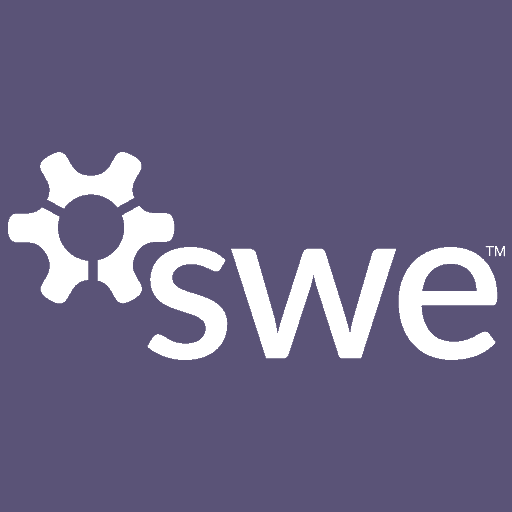In the wake of COVID-19, SWE sections, SWENext clubs, and many other outreach organizations have quickly pivoted to provide meaningful STEM content to children of all ages. Volunteers across the country have proved that the lack of in-person interaction does not have to limit engagement or learning opportunities at your next outreach event. SWE members who have hosted virtual outreach events and webinars have come together to share a virtual event planning timeline filled with tips and tricks to make sure your next event can make an impact through the Web.
Thank you to Dr. Mary Isaac and Madalyn Nguyen for their candid advice!
Brainstorm: Planning Virtual Activities
Recommended 60 Days Prior to Event
- Choose a topic: Thoroughly researching content ideas is critical to ensuring an engaging virtual experience. It’s more important than ever to know your audience. Dr. Mary Isaac suggests, “Ask SWENext girls what they want to hear about. Use local SWE contacts to find good speakers who are passionate both about their topic and engaging young girls.”
- Determine the nature of the event: If planning a live event, Zoom is a great platform for video conferencing. We recommend using the break-out room feature for more intimate discussions and collaboration between participants. The polling feature is also a great way to keep your audience engaged throughout the session. If you are planning pre-recorded content, consider using Flipgrid. This platform allows hosts to create a lesson or discussion prompt, and your participants can share video responses through the website.
- Consider hands-on activities: Hands-on learning experiences are the crux of most STEM outreach events. Although more challenging in a virtual setting, this level of interaction can still be achieved. We recommend planning activities that only require common household goods that participants can reasonably provide themselves. Mary Isaac adds, “For hands-on activities, use kits available for pickup at a specific location or give them a materials list ahead of time for cheap, readily available materials.”
- Contact guest-speakers and volunteers: Take the time to find speakers who are passionate about the topic you plan to share and who are comfortable engaging with children. Also plan to assign an event moderator who will introduce the event, guide transitions, keep the event on schedule, monitor chat, hand raise, or waiting room features and any technical difficulties.
Spreading the Word: Using Virtual Platforms to Expand Your Audience
Recommended 30 Days Prior to Event
- Promote your event: SWE is here to support your outreach efforts and can share your event info in the bi-monthly SWENext newsletter. If you would like your event highlighted, please submit this form. Event information must be submitted by the 5th of the month for the mid-month newsletter and by the 20th of the month for the end-of-month publication.
- Expand your reach: When marketing your event, recognize that one of the biggest advantages of a virtual event is that you’re not limited by traveling distance; you have the opportunity to reach potential participants far and wide. At a virtual robotics camp, Mary Issac saw a 250% increase in attendance compared to prior in-person camps. SWENexter Madalyn Nguyen reflects on a recent virtual outreach event: “We had attendees from west to east coast and international since we were able to advertise on social media. We had attendees from Jakarta, Africa, Paraguay, and Mexico. The second advantage was being able to invite speakers not exclusive to San Diego County. We were able to invite our SWE member speakers from all over, including from JPL-Pasadena and Houston’s Johnson Space Center.”
- Prevent Zoom Bombers: “For security, have attendees sign up and don’t just post the webinar link. It helps with preventing Zoom bombers, and you know who’s attending (for impact data),” shares Madalyn.
- Other logistics:
- Finalize event schedule, moderator script, and activity/topic details
- Create presentation slides or other visual aides
- Contact speakers and volunteers to schedule a dry-run
Dry-Run: Practice Makes Perfect
Recommended 1-2 Weeks Prior to Event
- Conduct dry-run at least 7 days in advance: Practice will help your volunteers become more comfortable with speaking and engaging with participants over a web-cam and will help avoid any awkward transitions. If planning hands-on activities, more intensive training will be necessary. “Depending on how technical [the activity is], training will likely be required of volunteers on any activity the kids are doing, so they can help them problem-solve issues,” Mary shares. From her experience, it is always best to err on the side of more training. Investing time in training up-front, will save time troubleshooting on the event day. If planning a Q&A session, Madalyn also shares, “It’s important to have pre-set questions for the Q&A, and we include an opportunity to ask a question in the registration…You don’t want to have dead air during the webinar, so being prepared with some questions ahead is important.”
- Be sure to identify clear roles for everyone involved with the event: Assign an event moderator, and be sure to provide this volunteer with a clear schedule of event activities. This volunteer will be critical to keeping the event on time and monitoring any technical difficulties.
- Other Logistics:
- Tweak scripts and visual aides as necessary. Send all content to your volunteers for review.
Going Live: Sharing Your Hard Work
- Have volunteers call in 15-20 minutes before the event. Madelyn suggests, “soundcheck, camera angle [check], and answers to last-minute questions.” She adds, “it’ll be harder to find the speaker in the waiting room if there’s a lot of people waiting; early check-in is important.”
- Have fun with it and don’t worry if something doesn’t go as planned! Participants will be very understanding of technical glitches and other mishaps; we’re all new to this virtual world. Mary shares, “Be patient with the girls and the situation. Try to make a connection with the girls you are working with” just as you would in an in-person setting.
- Take screenshots to commemorate your event. Also, consider recording your event to post to Youtube or email to contacts who were interested but unable to attend. Gain approval from parents/guardians prior to recording. Madalyn recommends asking for consent during registration. “If they are not interested, we ask them to consent but will not show their view and mask their name [on the screen].”
Follow-Ups: Reflect on Your Event’s Accomplishments
Recommended 72 Hours After the Event
- Thank your participants via email: Ask participants to submit a feedback form. For events aimed at younger children, it is good to have one feedback form for the child and one form for the parent/guardian to get both perspectives. Also be sure to share any fun screenshots you may have captured! Recommended 1-2 Weeks After the Event
- Meet with volunteers to review any feedback you received. Reflect on positives, negatives, and areas for improvement.
- Have a tip that other SWEsters may appreciate learning from? Share your feedback with us here!
Related Content:
- Teens at inteGIRLS Run the First Virtual Puzzle Competition for Girls Around the World
- 25 Key Points From SWE Chennai Affiliate Virtual Meeting
- WE20 Registration and Housing Now Available!
Author
-

SWE Blog provides up-to-date information and news about the Society and how our members are making a difference every day. You’ll find stories about SWE members, engineering, technology, and other STEM-related topics.








